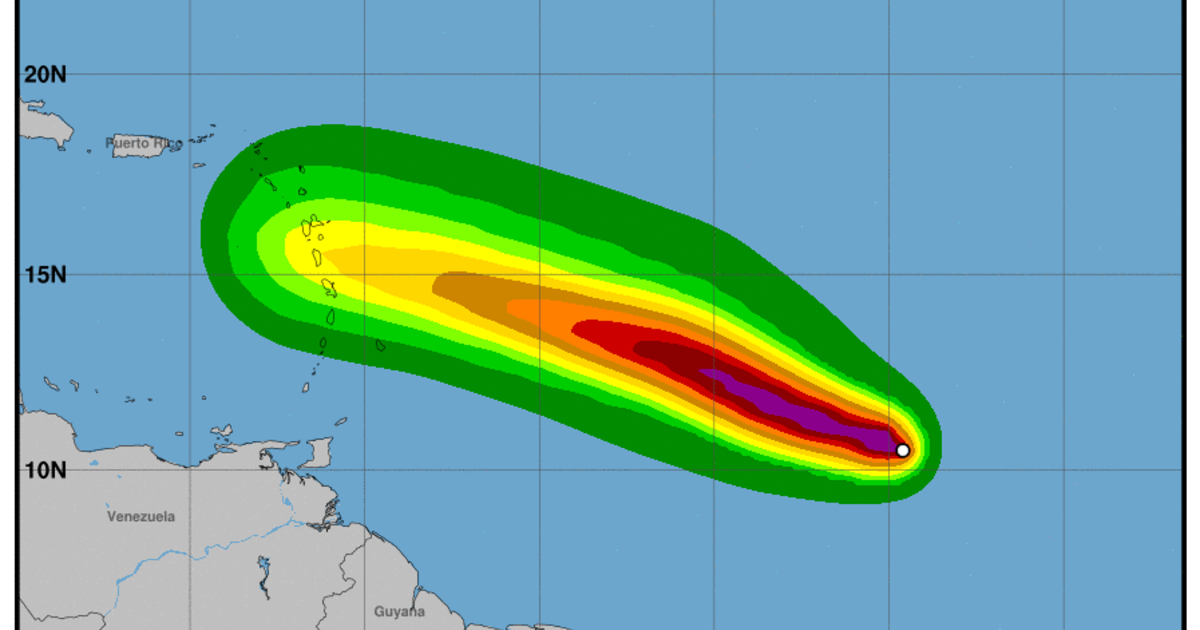Hurricane Beryl’s Projected Path

Beryl hurricane path – Hurricane Beryl is currently a Category 2 storm with maximum sustained winds of 100 mph. The storm is located about 1,000 miles east of the Lesser Antilles and is moving west-northwest at 15 mph.
The National Hurricane Center (NHC) predicts that Beryl will continue to move west-northwest for the next few days, passing south of the Lesser Antilles and Puerto Rico. The storm is then expected to turn northwest and approach the Bahamas by early next week.
Beryl’s path has caused disruptions far and wide, from coastal evacuations to grounded flights. Amidst the chaos, a glimmer of empathy emerged when a flight attendant, despite the hurricane’s impact, took the time to address a passenger by their preferred pronouns.
This incident, reminiscent of the misgendering flight attendant controversy, highlights the importance of respecting individuals’ identities even during trying times. As Beryl continues its course, let’s hope for a swift resolution and a reminder that compassion should always prevail.
Potential Impact Areas
The NHC has issued a hurricane watch for the Bahamas and a tropical storm watch for the Turks and Caicos Islands.
Beryl is expected to bring heavy rain, strong winds, and storm surge to the Bahamas and the Turks and Caicos Islands. The storm could also cause flooding and landslides in these areas.
The beryl hurricane path has been unpredictable, leaving many in its wake. As the storm continues to move, it is important to stay informed about its potential impact. For the latest updates on the beryl hurricane path, visit beryl hurricane path for more information.
Timeline for the Storm’s Arrival
Beryl is expected to pass south of the Lesser Antilles by Saturday night and reach the Bahamas by early next week.
The storm is expected to make landfall in the Bahamas by Tuesday or Wednesday.
Historical Context of Hurricane Beryl: Beryl Hurricane Path

Hurricanes are a common occurrence in the Atlantic Ocean, and the Caribbean Sea, with the peak of the hurricane season occurring in August and September. Historically, several hurricanes have had similar paths or characteristics to Hurricane Beryl.
One such hurricane is Hurricane Ivan, which made landfall in the Gulf of Mexico in 2004. Ivan had a similar track to Beryl, making landfall in Alabama and causing widespread damage. Another hurricane with a similar path is Hurricane Katrina, which devastated the Gulf Coast in 2005.
Frequency and Severity of Hurricanes in the Affected Region
The affected region has a long history of hurricanes, with major hurricanes occurring every few years. The frequency and severity of hurricanes in the region have been increasing in recent years, likely due to climate change.
- In the past 50 years, the number of major hurricanes (Category 3 or higher) in the Atlantic Ocean has increased by 50%.
- The intensity of hurricanes has also increased, with the average wind speed of major hurricanes increasing by 10% in the past 50 years.
Potential Impact of Hurricane Beryl
Based on historical patterns and trends, Hurricane Beryl has the potential to be a major hurricane with significant impacts on the affected region. The hurricane is expected to bring high winds, heavy rain, and storm surge to the Gulf Coast.
The potential impact of Hurricane Beryl includes:
- Widespread damage to homes and businesses
- Power outages
- Flooding
- Loss of life
It is important for residents in the affected region to take precautions and prepare for the potential impact of Hurricane Beryl.
Safety and Preparedness Measures

As Hurricane Beryl approaches, it’s crucial for residents in its path to prioritize safety and take proactive preparedness measures. These actions can significantly minimize the risks associated with the storm and ensure the well-being of individuals and communities.
Staying informed and adhering to official advisories issued by authorities is paramount. Regularly monitor weather updates, listen to local news, and follow official social media channels to stay abreast of the storm’s progress and any necessary actions.
Evacuation Procedures, Beryl hurricane path
Evacuations may become necessary if Hurricane Beryl’s projected path poses a significant threat to certain areas. Residents should be prepared to evacuate promptly if instructed by local officials. Evacuation routes and designated shelters will be communicated through official channels. It’s essential to plan evacuation routes in advance, identify meeting points for family members, and ensure vehicles are fueled and ready for departure.
Emergency Supplies
Assembling an emergency supply kit is vital for sustaining oneself during and after the storm. This kit should include:
- Non-perishable food items and bottled water for at least three days
- First-aid kit and essential medications
- Flashlights, batteries, and a portable radio
- Whistle or other signaling device
- Copies of important documents (e.g., identification, insurance, medical records)
- Cash and credit cards
- Pet supplies (if applicable)
Shelter Options
In the event of evacuation, designated shelters will be established to provide temporary accommodation and essential services. These shelters typically offer sleeping arrangements, food, and medical assistance. It’s important to note that shelters may have limited capacity, so early arrival is recommended.